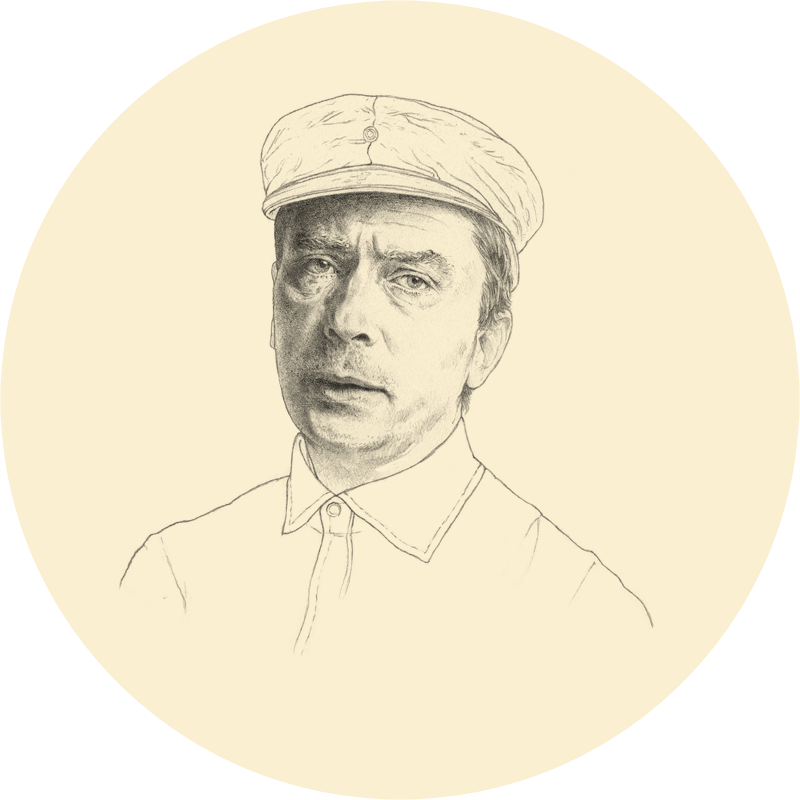You, the manufacturer of your thought and the surfaces that displayed it like secular icons. You were not lacking in manual skill: that of the art student, the painter, the chef, the electrician who fixed the wiring of the building where you worked, with a bench full of tools, often stretched out on the floor. You spent most of the day at Via Machiavelli 30, and often the night as well, resting on a cot in an adjacent room. As the years went by Germana, who had become a doctor, also came to live on the same courtyard. You spent time together every day, you told her about your projects, your breakthroughs, over a plate of risotto seasoned with laughter.
You did everything without haste, but also without relenting. You were exact to the point of fanatism, and incessant at the same time. All in a span of not quite fifteen years, Vincenzo. Beginning from the end, from what you had stopped doing in your years in Argentina: writing. For the publishing house of your friend Vanni Scheiwiller you kicked off the series of the “Denarratori” with the novel Obsoleto, featuring a cover by Castellani. A non-novel that becomes increasingly illegible, page after page, until you make it totally unworkable by filing down the lead type. A book, an object, a performance. Everything that is to come is already there. And what is to come is the Macchina drogata (Drugged Machine). An Olivetti Divisumma 14 calculator you altered by replacing the numbers with letters. The viewer was not asked to merely observe the object, but also to intervene, to interact, producing “drugged” texts that were printed and displayed. A work in the making, a performance, where it is hard to find the boundaries between artifact, artist and visitor. A disturbing work, an operative critique of language and the technological myth, which you knew far better than most, Vincenzo.
And so on, little by little. By way of Architettura tradotta per tutti i popoli (Architecture Translated for All Peoples), where from all the iconic works you could have chosen, as a proper Milanese you showed the dome of Santa Maria delle Grazie, cutting out your Libri dimenticati a memoria (Books Forgotten by Heart), inventing the Static Theater for your Amleto politico Political Hamlet) made of numerical sequences that became thrilling in your reading, without overlooking the series of the Assiomi (Axioms) engraved on black Bakelite, the Enunciati (Statements) on felt, true visualized thoughts, and the telegrams, the “self phone calls,” the poems, the installations and performances… it would be impossible to account for all of your creative energy.
Your work was traveling around the world, and you were a trailblazer, opening a studio in Manhattan, the world art capital, where you spent time with artists like Shusaku Arakawa or gallerists like Ronald Feldman. Without haste, but relentlessly, at the end of your days you had arrived at a new field of artistic experimentation. You worked tirelessly in your studio, on a workbench covered with photographic paper and vats of acid, on the Photo-graffie. You exposed the paper to light, passing it through the acids, blackening it with an excess of objective reality. You passed from light to darkness, and then – in a sublimely poetic way – you scratched and etched the sheets, rediscovering inner images that were much more authentic than conventional reality. You ended up where you had begun, returning to a figurative dimension forgotten by heart. Your last exhibition was at PAC, where you showed four large glass pieces, Le stagioni (The Seasons), depicting a landscape of the soul etched on blackened photographic paper. In a poem written for the exhibition, you said you scratched “the sidereal blackness that came out with the light,” the infinite darkness of a future you knew you could not meet.
Naturally you aimed your gaze at the future, and yet you knew, in private, intimate family conversations, that your time was short. You were certain that you would not see the turn of the millennium. “My father died at 48,” you once said to the person beside you, “and I too will die young.” Your energetic work was a race against time, Vincenzo. Until that morning in September. You called your daughter, who was at work at the hospital, telling her you had a terrible headache. You agreed on an afternoon visit. Then came a stroll in that late Milanese summer, and a stroke. Sudden death, absolute black. And perhaps even the awareness of the end of everything. “When I saw myself, I wasn’t there.”
